The Fruit From Baltimore’s Forbidden Tree Is Dead At Age 73: Even In His Passing The Legacy Of “Little Melvin” Williams Remains A Symbol Of Death For His Own People
Posted by David Adams on December 4th, 2015
He was celebrated perhaps as one of Baltimore’s greatest native sons, who emerged from poverty, and manifested a street pedigree from his days as a hooligan while navigating the card parlors, pool halls and back-alley crap games of West Baltimore. An endeavor that “Little Melvin” Williams would eventually transform into a multi million dollar empire.
Many who still remain that remember, are either too ignorant, or simply don’t care about how the underworld of organized crime utilized the likes of a young street hustler to exact a paralyzing, and poisonous culture of drug abuse on an entire city through the solicitation of heroin throughout Baltimore’s poorest communities. At the height of the civil rights movement in this country, and just about around the time that America began to cave in to the pressures of the illegality of segregation, and unconstitutional “Jim Crow” laws, another plan was being formulated to replace the oppressive state of black America that was once being implemented through racism.
In the backdrop of a revolutionizing social code in this country which would give people of color new found freedoms, a manipulative transformation of how mobsters and other crime figures during that era would conduct business in the black communities began to take shape. In an ironic but obvious coincidence of timing, the change that civil rights brought to this country gave birth to a seemingly new tactic to control an entire race of people, and when crime bosses began authorizing the solicitation of drugs, they took notice of a young Melvin Williams who possessed a persona seemingly impervious to the pressures of Baltimore’s tough streets.
It was the East Coast factions of the “mafia” who recruited “Little Melvin” and gave him the Baltimore heroin franchise. Later on local Jewish crime boss figure Julius “the Lord” Salisbury took Melvin under his wing, and introduced him to mobster Meyer Lansky (Depicted as the character Hyman Rothe in the iconic film “The God Father II”). Lansky who was a Russian immigrant, teamed up with a more notable crime figure Charles “Lucky” Luciano, and organized a national and international crime syndicate which included a strong hold on Cuba, linking together various mob factions across the globe while also incorporating more reputable spheres of power into their criminal dealings.
With help from organized crime families of such powerful men connected to the mob, Melvin Williams had the backing of street muscle (violent enforcers), police officials, and some say politicians and judges alike, who were covertly complicit to his ability to reach such success of selling 40-50 kilos of heroin in Baltimore on a monthly basis. The city’s black business district which ran along the corridor or West Baltimore’s famed Pennsylvania Avenue, was ground zero for drug enterprises that prove to be extremely lucrative for Melvin and his mob cronies.-
As the acquisition of new laws such as the Fair Housing Act of 1964 became the norm, white flight from the inner city also became very prevalent, and drug dealers who worked for “Little Melvin” moved in and set up shop . The open air drug markets that came about on that side of town created a devastating impact on the social, economic, and educational dynamics of the black community, because during that era Pennsylvania Avenue was the commerce mecca of Baltimore’s business and cultural centers for black people.
Nearly every black person in the city did some form of shopping or other business on Pennsylvania Avenue. Mobsters knew what they were doing when they unleashed Melvin into that portion of the black community with a constant supply of heroin. It almost but certainly guaranteed that drug soliciting would be marketed at the very apex of Baltimore’s black consumer base. The drug epidemic that followed has lasted decades, and much of the residuals of how organized crime literally paralyzed and destroyed an entire culture of people with heroin can still be seen throughout Baltimore to this day.
At the same time that heroin became a popular and acceptable form of recreational drug usage in Baltimore, those in charge of the city’s commercial growth began to implement the development of high rise public housing, which gave birth to the storied Murphy Homes and Lexington Terrace housing projects. The projects were designed to preempt white flight to the suburbs and keep white money in the city. The mob reeked havoc on the poor black communities that rose from the construction of housing projects. The misery of poverty, despair, and the lack of opportunity economically made many of these communities extremely vulnerable to drug solicitation, which “Little Melvin” Williams gladly served as ambassador for powerful organized crime figures.
Baltimore police officials say that Melvin’s first conviction was a sham. He was set up by the feds, who planted drugs on him. Upon his parole in 1979, Baltimore City would never be the same. He became Baltimore’s main supplier of heroin, a substance that plagues the city beyond epidemic proportions to this very day. At its peak, Melvin’s operation employed some 200 dealers and made millions of dollars a year. He owned dozens of properties and vehicles, and his gang waged a campaign of violence and intimidation throughout the city. A trail of bloody carnage, drug addiction, and an extremely devastating impact on the black family structure in Baltimore, typically rooted in heroin addiction was left in its wake.
Years after multiple convictions for various crimes, Melvin would eventually change his life and turn to the church. Ironically, two of the very people responsible for his demise, were also the ones who gave him his first acting gig on “The Wire.” It seemed fitting, especially since much of the material that producers Ed Burns and David Simon were writing for the show’s scripts were based mostly on Melvin’s activities as a drug kingpin at the peak of his career as a criminal. Burns was the detective responsible for investigating Melvin and eventually arrested him. David Simon was a writer for the Baltimore Sun during that time and had wrote most of the articles about Melvin’s drug gang.
Later on in life “Little Melvin” Williams would go on to do great things within the black community by mentoring troubled and at risk young black males. His deeds in that regard have been highly praised by many clergy, community leaders, and other public officials who know about his legacy as a kingpin on the streets of Baltimore. However, despite his evolution as man from a drug dealer to a mentor for many black youth, the blood stains, death, and tears of grieving families whose loved ones fell as casualties of Baltimore’s violent drug culture, are aspects of Melvin’s rein as a notorious drug kingpin that will never be forgotten. For some the very memory of “Little Melvin” Williams remains a constant reminder of his intricate role in the revolution of heroin dealing onto the streets of Baltimore.
Although the highly addictive drug wasn’t a common narcotic within the black community (Came on the scene initially as a rich man’s high), noted and famed entertainers like native Baltimore Jazz Great Billy Holiday, John Coltrane, Ray Charles, and others were some of its early junkies who were lured to its grasp while indulging in intravenous drug usage. You didn’t see a plethora of junkies buying that kind of “smack” (its street name back in the day) on street corners in the white community, because they didn’t allow it. Now considering how heroin and other drugs have such a strong hold on the black community, coupled with the carnage left in its path, we can clearly see how well orchestrated organized crime figures utilized men the likes of Melvin “Little Melvin” Williams as a prostitute, who solicited such a poisonous death to his own people, while serving as the Mob’s whore in the underworld of drug dealing.
Moreover, there are people who will argue that bringing up his past missteps in life serves no good, but rather we should celebrate a man’s growth whether its spiritually, educationally, or socially. There is in fact some merit to such a perspective when discussing an individuals personal transformation into a posture of righteous indignation for the betterment of his community, but when the missteps of such a heinous criminal are directly responsible for the solicitation of poisonous toxins to hundreds of thousands of his own people, and leaving a pathway of death and destruction still visible decades later, perhaps his death is the only meaningful contribution and amends that he could ever make to the very culture of people to whom he is in debt in modern society.
Those who have become aware of the urban blight that permeates the city of Baltimore, got a first hand look at the economic, educational, and social disenfranchisement of communities like Sandtown-Winchester (home of the late Freddie Gray), Penn-North, and Murphy Homes/ Lexington terrace project developments on the city’s west side. The abandoned homes, homelessness, and pervasive drug addiction are the residual bi-products that are the direct result of the criminal enterprises of “Little Melvin” Williams, who gave the mob a door key to the black community at the height of the Civil Rights Movement. The partnership eventually accomplished two objects:
1. It earned them both lucrative drug profits in the hundreds of millions of dollars.
2. Guaranteed that a devastating impact would be made on the black community through drug usage and addiction, that would cripple their growth as a people for decades.
So, the next time you take a trip to Lexington Market in downtown Baltimore or any other part of the city where there is an abundance of drug addicts gathered, attending court ordered drug counseling, and posted up in the iconic “dope fiend lean,” you can thank the likes of the late Melvin Williams. His legacy has meant nothing but death to black people in Baltimore, and he should not be celebrated as the notorious drug kingpin that television shows like “American Gangster” depict him as. Our children should be taught to revile the very memory of men like him forever! His death is perhaps the greatest contribution he ever made to society.

The iconic image coined by Baltimore’s street vernacular as “the dope fiend lean.”
The People’s Champion
I’m Crime Blogger David Adams
A Self proclaimed geek, Sympathizer for the homeless, Social Change Advocate, Crime Blogger, Promoter of Awareness for Missing and Exploited Children, and a mobile technology enthusiast. A recognized Journalist and Human Interest Writer championing the plight of the masses whom are without a voice of their own.
More Posts - Website
Follow Me:





He was celebrated perhaps as one of Baltimore’s greatest native sons, who emerged from poverty, and manifested a street pedigree from his days as a hooligan while navigating the card parlors, pool halls and back-alley crap games of West Baltimore. An endeavor that “Little Melvin” Williams would eventually transform into a multi million dollar empire.
Many who still remain that remember, are either too ignorant, or simply don’t care about how the underworld of organized crime utilized the likes of a young street hustler to exact a paralyzing, and poisonous culture of drug abuse on an entire city through the solicitation of heroin throughout Baltimore’s poorest communities. At the height of the civil rights movement in this country, and just about around the time that America began to cave in to the pressures of the illegality of segregation, and unconstitutional “Jim Crow” laws, another plan was being formulated to replace the oppressive state of black America that was once being implemented through racism.
In the backdrop of a revolutionizing social code in this country which would give people of color new found freedoms, a manipulative transformation of how mobsters and other crime figures during that era would conduct business in the black communities began to take shape. In an ironic but obvious coincidence of timing, the change that civil rights brought to this country gave birth to a seemingly new tactic to control an entire race of people, and when crime bosses began authorizing the solicitation of drugs, they took notice of a young Melvin Williams who possessed a persona seemingly impervious to the pressures of Baltimore’s tough streets.
It was the East Coast factions of the “mafia” who recruited “Little Melvin” and gave him the Baltimore heroin franchise. Later on local Jewish crime boss figure Julius “the Lord” Salisbury took Melvin under his wing, and introduced him to mobster Meyer Lansky (Depicted as the character Hyman Rothe in the iconic film “The God Father II”). Lansky who was a Russian immigrant, teamed up with a more notable crime figure Charles “Lucky” Luciano, and organized a national and international crime syndicate which included a strong hold on Cuba, linking together various mob factions across the globe while also incorporating more reputable spheres of power into their criminal dealings.
With help from organized crime families of such powerful men connected to the mob, Melvin Williams had the backing of street muscle (violent enforcers), police officials, and some say politicians and judges alike, who were covertly complicit to his ability to reach such success of selling 40-50 kilos of heroin in Baltimore on a monthly basis. The city’s black business district which ran along the corridor or West Baltimore’s famed Pennsylvania Avenue, was ground zero for drug enterprises that prove to be extremely lucrative for Melvin and his mob cronies.-
As the acquisition of new laws such as the Fair Housing Act of 1964 became the norm, white flight from the inner city also became very prevalent, and drug dealers who worked for “Little Melvin” moved in and set up shop . The open air drug markets that came about on that side of town created a devastating impact on the social, economic, and educational dynamics of the black community, because during that era Pennsylvania Avenue was the commerce mecca of Baltimore’s business and cultural centers for black people.
Nearly every black person in the city did some form of shopping or other business on Pennsylvania Avenue. Mobsters knew what they were doing when they unleashed Melvin into that portion of the black community with a constant supply of heroin. It almost but certainly guaranteed that drug soliciting would be marketed at the very apex of Baltimore’s black consumer base. The drug epidemic that followed has lasted decades, and much of the residuals of how organized crime literally paralyzed and destroyed an entire culture of people with heroin can still be seen throughout Baltimore to this day.
At the same time that heroin became a popular and acceptable form of recreational drug usage in Baltimore, those in charge of the city’s commercial growth began to implement the development of high rise public housing, which gave birth to the storied Murphy Homes and Lexington Terrace housing projects. The projects were designed to preempt white flight to the suburbs and keep white money in the city. The mob reeked havoc on the poor black communities that rose from the construction of housing projects. The misery of poverty, despair, and the lack of opportunity economically made many of these communities extremely vulnerable to drug solicitation, which “Little Melvin” Williams gladly served as ambassador for powerful organized crime figures.
Baltimore police officials say that Melvin’s first conviction was a sham. He was set up by the feds, who planted drugs on him. Upon his parole in 1979, Baltimore City would never be the same. He became Baltimore’s main supplier of heroin, a substance that plagues the city beyond epidemic proportions to this very day. At its peak, Melvin’s operation employed some 200 dealers and made millions of dollars a year. He owned dozens of properties and vehicles, and his gang waged a campaign of violence and intimidation throughout the city. A trail of bloody carnage, drug addiction, and an extremely devastating impact on the black family structure in Baltimore, typically rooted in heroin addiction was left in its wake.
Years after multiple convictions for various crimes, Melvin would eventually change his life and turn to the church. Ironically, two of the very people responsible for his demise, were also the ones who gave him his first acting gig on “The Wire.” It seemed fitting, especially since much of the material that producers Ed Burns and David Simon were writing for the show’s scripts were based mostly on Melvin’s activities as a drug kingpin at the peak of his career as a criminal. Burns was the detective responsible for investigating Melvin and eventually arrested him. David Simon was a writer for the Baltimore Sun during that time and had wrote most of the articles about Melvin’s drug gang.
Later on in life “Little Melvin” Williams would go on to do great things within the black community by mentoring troubled and at risk young black males. His deeds in that regard have been highly praised by many clergy, community leaders, and other public officials who know about his legacy as a kingpin on the streets of Baltimore. However, despite his evolution as man from a drug dealer to a mentor for many black youth, the blood stains, death, and tears of grieving families whose loved ones fell as casualties of Baltimore’s violent drug culture, are aspects of Melvin’s rein as a notorious drug kingpin that will never be forgotten. For some the very memory of “Little Melvin” Williams remains a constant reminder of his intricate role in the revolution of heroin dealing onto the streets of Baltimore.
Although the highly addictive drug wasn’t a common narcotic within the black community (Came on the scene initially as a rich man’s high), noted and famed entertainers like native Baltimore Jazz Great Billy Holiday, John Coltrane, Ray Charles, and others were some of its early junkies who were lured to its grasp while indulging in intravenous drug usage. You didn’t see a plethora of junkies buying that kind of “smack” (its street name back in the day) on street corners in the white community, because they didn’t allow it. Now considering how heroin and other drugs have such a strong hold on the black community, coupled with the carnage left in its path, we can clearly see how well orchestrated organized crime figures utilized men the likes of Melvin “Little Melvin” Williams as a prostitute, who solicited such a poisonous death to his own people, while serving as the Mob’s whore in the underworld of drug dealing.
Moreover, there are people who will argue that bringing up his past missteps in life serves no good, but rather we should celebrate a man’s growth whether its spiritually, educationally, or socially. There is in fact some merit to such a perspective when discussing an individuals personal transformation into a posture of righteous indignation for the betterment of his community, but when the missteps of such a heinous criminal are directly responsible for the solicitation of poisonous toxins to hundreds of thousands of his own people, and leaving a pathway of death and destruction still visible decades later, perhaps his death is the only meaningful contribution and amends that he could ever make to the very culture of people to whom he is in debt in modern society.
Those who have become aware of the urban blight that permeates the city of Baltimore, got a first hand look at the economic, educational, and social disenfranchisement of communities like Sandtown-Winchester (home of the late Freddie Gray), Penn-North, and Murphy Homes/ Lexington terrace project developments on the city’s west side. The abandoned homes, homelessness, and pervasive drug addiction are the residual bi-products that are the direct result of the criminal enterprises of “Little Melvin” Williams, who gave the mob a door key to the black community at the height of the Civil Rights Movement. The partnership eventually accomplished two objects:
1. It earned them both lucrative drug profits in the hundreds of millions of dollars.
2. Guaranteed that a devastating impact would be made on the black community through drug usage and addiction, that would cripple their growth as a people for decades.
So, the next time you take a trip to Lexington Market in downtown Baltimore or any other part of the city where there is an abundance of drug addicts gathered, attending court ordered drug counseling, and posted up in the iconic “dope fiend lean,” you can thank the likes of the late Melvin Williams. His legacy has meant nothing but death to black people in Baltimore, and he should not be celebrated as the notorious drug kingpin that television shows like “American Gangster” depict him as. Our children should be taught to revile the very memory of men like him forever! His death is perhaps the greatest contribution he ever made to society.

The iconic image coined by Baltimore’s street vernacular as “the dope fiend lean.”
The People’s Champion
I’m Crime Blogger David Adams
A Self proclaimed geek, Sympathizer for the homeless, Social Change Advocate, Crime Blogger, Promoter of Awareness for Missing and Exploited Children, and a mobile technology enthusiast. A recognized Journalist and Human Interest Writer championing the plight of the masses whom are without a voice of their own.
More Posts - Website
Follow Me:




You can
leave a response, or
trackback from your own site.

 RSS Feed
RSS Feed Twitter
Twitter





 Posted in
Posted in 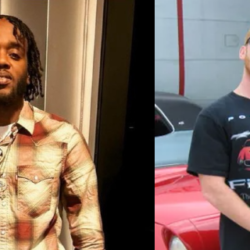

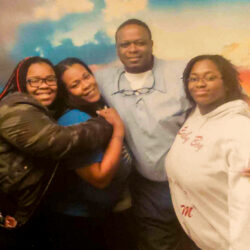
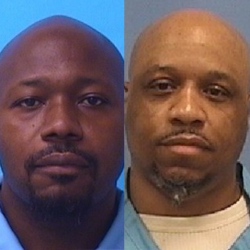
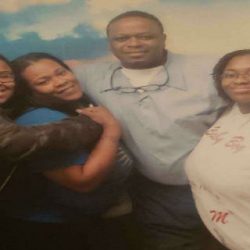



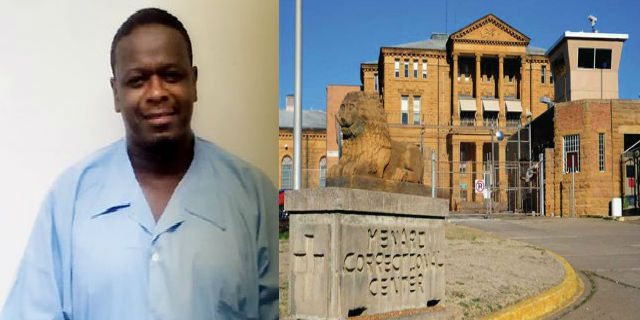




Gaston Cleaver
I found a great…
Sign up form for Joomla without all the bells and whistles?